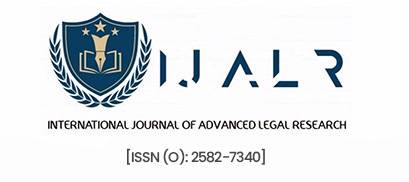Introduction
Money laundering is a criminal offence in India and is prohibited by both the Prevention of Money Laundering Act (PMLA) and the Narcotic Drugs and Psychotropic Substances Act (NDPS). The NDPS Act’s money laundering provisions are limited to drug-related crimes, while the PMLA covers a wider range of underlying offences, including narcotics. According to the NDPS Act, drug-related offences are only applicable to offences committed within India. This is because Section 8A (c) of the NDPS Act does not mention drug offences committed in other countries, nor does it include a provision that extends the Act’s jurisdiction to offences committed outside of India. Since PMLA has incorporated drug-related predicate offences under the NDPS Act and has jurisdiction beyond national borders, the provisions outlined in Section 8A of the NDPS Act have become unnecessary. However, they have not yet been abolished. The offence of money laundering under the PMLA applies to anyone who knowingly participates in the laundering of proceeds from a crime, including the person who committed the underlying offence. On the other hand, the money laundering provision under the NDPS Act applies to any person without any exceptions. In addition, there is no legal principle in India that prohibits the use of ML provisions for the predicate offender.45 On December 9th, 2005, India signed the UN Convention against corruption, which is also referred to as the Merida Convention. Money laundering is often associated with corruption as it is considered to be one of the predicate offences.
The primary goal of introducing such legislation was to combat the crime of legalising financial earnings from illicit sources. The Indian Government and police officials are authorised by this Act to confiscate any property that has been determined to have been obtained through illegal means or by engaging in unlawful activities.
The PML Act was created with the purpose of preventing or impeding the occurrence of money laundering, as its name implies. Additionally, the intention was to confiscate any assets acquired through the commission of money laundering and for related matters pertaining to such an offence.
Key Provisions Of The Prevention Of Money Laundering Act, 2002 Objectives Of The Act:
The Prevention of Money Laundering Act, 2002, was established to address the problem of money laundering. A few of its objectives include:
- To address and manage the problem of money laundering.
- The act of seizing or detaining any assets that are suspected to be linked to money laundering or have been obtained through such illegal means.
- To punish those who commit the crime of money laundering.
- For choosing the tribunal and adjudicating body that will handle money launderingrelated cases.
- It is proposed to mandate banking companies, financial institutions, and intermediaries to maintain records or documents pertaining to financial transactions.
- To address any additional concerns pertaining to the act of money laundering.

